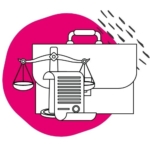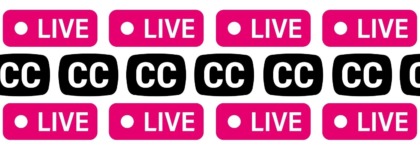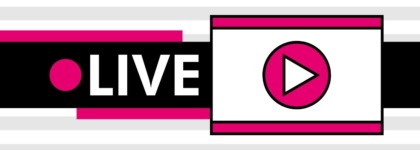Legal Requirements for Live Captioning
Updated: July 3, 2024
Learn how the ADA impacts video accessibility
If you’re hosting live virtual events, you should be providing live captions for many reasons: live captions increase accessibility for viewers who are deaf and hard-of-hearing, boost user engagement, comprehension, and learning, and help you comply with legal requirements for live video.
However, legal compliance is sometimes confusing. Many accessibility laws were created before today’s technological innovations, and it can be hard to keep up with relevant lawsuits.
In this blog, we’ll go over the legal requirements for live video and how providing live captioning can help you stay compliant.
Discover which lawsuits support video accessibility ➡️
ADA Requirements for Live Captioning
Passed in 1990, the Americans with Disabilities Act (ADA) set landmark accessibility requirements that impact both private and public entities. While the ADA does not explicitly mention online or live video, it requires that “auxiliary aids and services” be made available to anyone with a disability to ensure effective communication. Live captioning, also called real-time captioning or CART, is an example of an auxiliary aid for live events.
Under the ADA, captioning is required for:
- “Public entities,” including state and local governments, in internal and external communications.
- “Places of public accommodation,” which are public or private businesses used by the public at large. Private clubs and religious organizations are exempt.
Numerous lawsuits set a legal precedent for video accessibility and live captioning. For example, the 2012 lawsuit National Association of the Deaf v. Netflix categorized Netflix, a purely virtual business, as a “place of public accommodation” requiring closed captioning. While this lawsuit concerned closed captioning for pre-recorded content, other lawsuits have targeted live captioning.
In 2006, the National Association of the Deaf (NAD) filed a lawsuit against the Washington Commanders, called the Washington Redskins at the time, for failing to provide captioning during games. The complaint requested live captioning on scoreboards and video monitors for all announcements, plays, and penalties called during the game.
The court ruled that the Washington Commanders needed to make all audio projected into the stadium bowl over the public address system accessible to deaf and hard-of-hearing fans. The court held that the ADA required the team to “provide auxiliary aids beyond assistive listening devices, which are useless to plaintiffs, to convey the: (1) game-related information broadcast over the public address system, including play information and referee calls; (2) emergency and public address announcements broadcast over the public address system; and (3) the words to music and other entertainment broadcast over the public address system.”
Additionally, the NAD sued MIT and Harvard for not providing captions, or providing inaccurate captions, for online educational videos. Under the 2020 settlement, MIT agreed to not only provide captions for recorded content but also live captions for certain events that are streamed online. Harvard also agreed to provide captions for recorded content and live captions for certain live-streamed events.
Rehabilitation Act (Section 508 and 508) Requirements for Live Captioning
Enacted in 1973, the Rehabilitation Act originally addressed disability discrimination for federal entities or organizations receiving federal funding. Sections 504 and 508 broadened the act’s application to online and live video content.
Section 504 makes accessibility for disabled individuals a civil right. Failure to accommodate disabled individuals can result in a discrimination lawsuit, which applies to federal agencies and any entity receiving federal funding.
Section 508 mandates accessibility for electronic media or IT in federal programs or services. While this section doesn’t explicitly extend beyond federal agencies, many states passed laws called “mini 508 laws” that extend the section’s reach to organizations that receive federal funding.
Section 508 also requires compliance with WCAG 2.0 Level A and AA success criteria, which means that pre-recorded video must have captions and audio description, and live video must be live captioned.
Learn how the ADA impacts video accessibility ➡️
WCAG Requirements for Live Captioning
Aside from state and federal web accessibility laws, the most widely adopted and comprehensive technical standards have emerged from the W3C’s Web Content Accessibility Guidelines (WCAG).
WCAG is a set of standards for making digital content accessible for all users, including people with disabilities. The guidelines:
- Outline best practices for making web content universally perceivable, operable, understandable, and robust.
- Define criteria for successful inclusive web design, with ascending levels of compliance (levels A, AA, and AAA).
- Are composed and reviewed by a global community of digital experts.
- Connect the world through common information technology and user experience standards.
WCAG 2.0 and 2.1 outline three levels of compliance. Level A is the highest priority and the easiest to achieve. Level AA is more comprehensive and the recommended standard for accessibility. Level AAA is the strictest, most comprehensive standard for accessible design.
Here are the WCAG compliance levels for accessible video and synchronized media:
- Level A: (1.2.2) Captions are provided for all pre-recorded audio content in synchronized media, except when the media is a media alternative for text and is clearly labeled as such.
- Level AA: (1.2.4) In addition to Level A compliance, captions are provided for all live audio content in synchronized media.
- Level AAA: (1.2.6) In addition to Levels A and AA compliance, sign language interpretation is provided for all pre-recorded audio content in synchronized media.
Since WCAG Level AA is the recommended standard for accessibility, live video content must be live captioned.
Live Professional Captions vs. Live Auto Captions for Compliance
When considering legal compliance and accommodations, it’s imperative to distinguish between live auto-captioning and live professional captioning.
According to the W3C, automatic captions are not sufficient for meeting user needs or accessibility requirements unless they are confirmed to be entirely accurate, which is rarely the case.
We can apply the same logic to live captioning.
While event hosts can choose live auto-captioning, which uses Automatic Speech Recognition (ASR) technology, this option is rarely accurate enough to be considered an appropriate accommodation for deaf or hard-of-hearing viewers. Instead, the most suitable choice is live professional captioning, which uses a professional human captioner to deliver highly accurate real-time captions.
Want to learn more about how accessibility laws impact online video? Download the ebook:








